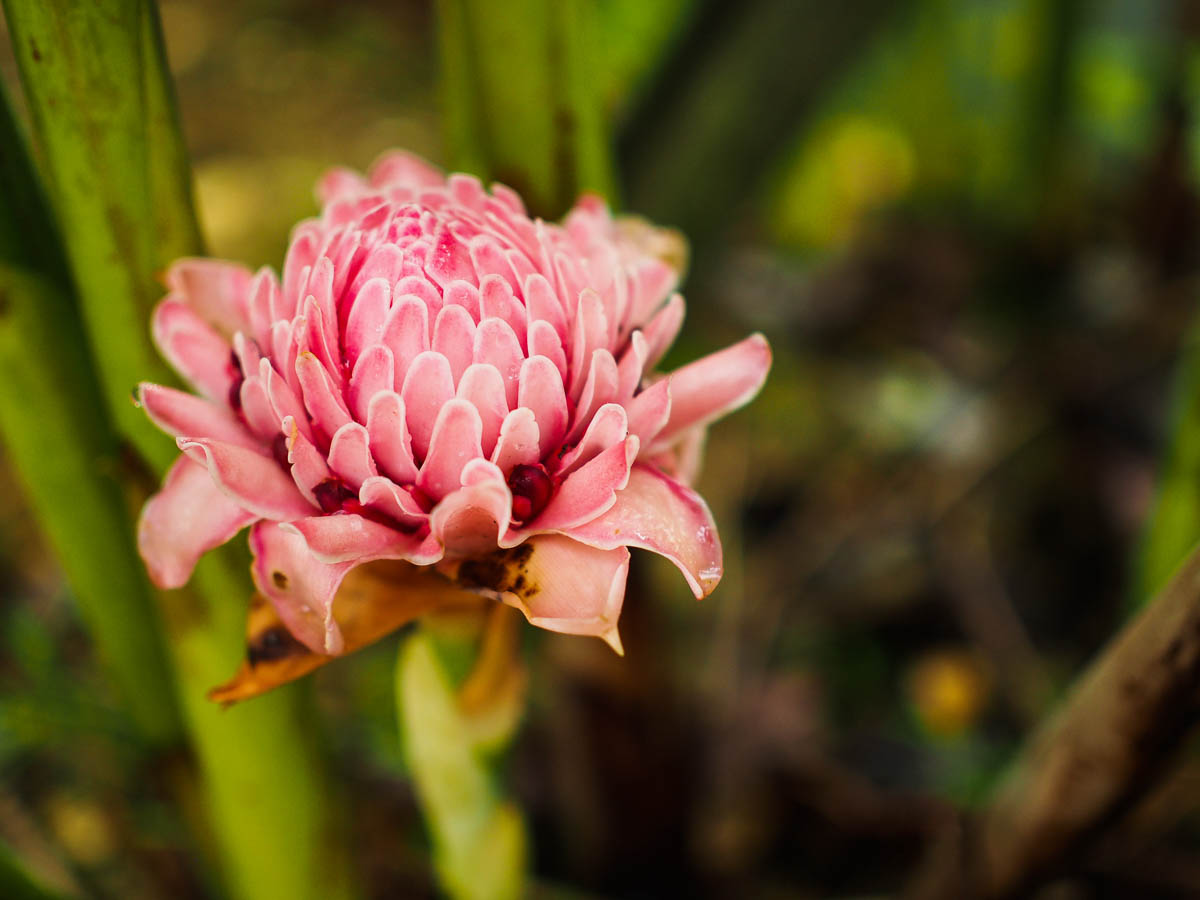Torch Ginger
Torch Ginger (Etlingera elatior)
Other common names: Philippine Waxflower, Painted Net Leaf, Nerve Plant, Bunga Kantan, 玫瑰姜, 火炬姜, 瓷玫瑰

Torch Gingers are an iconic edible flower that are a key ingredient in Rojak, a Southeast Asian salad. The unopened flowers are eaten raw, in stir fries, in sauces and in stews. Mature flowers are bright, showy, and long lasting, making them suitable as a cut flower. Mature flowers also attract nectivorous birds and can be used in biodiversity-attracting gardens.
It is a large perennial crop that grows rapidly in the tropics. This is a common plant in shady edible gardens, and is usually grown in true ground.
Torch Gingers are part of the Zingiberaceae or Ginger family, which includes other popular edible plants like Turmeric and Fingerroot.
Sun and soil needs:
Torch Gingers thrive in 4-8 hours of direct sunlight, or 6-8 hours of indirect sunlight.
Plants do best in loamy soil at least 30cm deep in true ground. These plants are vulnerable to root rot, so ensure that your soil drains well, and that your soil has plenty of organic matter to let the roots breathe.
This plant will not do well in places with a lot of wind, like on rooftop gardens. Protect the plant with other larger plants nearby to block off the wind.
Growing:
Torch gingers grow naturally in clusters as the plant grows more rhizome, an underground horizontal stem that resembles a tuberous root. Regular pruning and thinning plants will increase airflow and reduce the incidence of pests.
Harvesting:
Plants can be harvested for immature flowers at any time.
Propagation:
Torch gingers are propagated via division of the rhizome.
Common problems & solutions:
This plant is relatively resistant to pests and disease if kept healthy.
If your plant has few to no flowers, you can fertilise the plant with fertilisers high in phosphorus and potassium. These nutrients encourage root and flower growth, which are important for the plant to produce more fruit.
Wilting leaves during hot weather is a sign of heat stress. Increase the number of times the plant is watered daily, or move it to a shadier part of the garden.
Aphids, and Mealy Bugs often infest the plant if it has underlying problems like root rot. Mechanical pest control methods like pruning the infested parts are the best methods for managing these pests in the short term, but resolving the underlying problem will prevent them in the long term.

